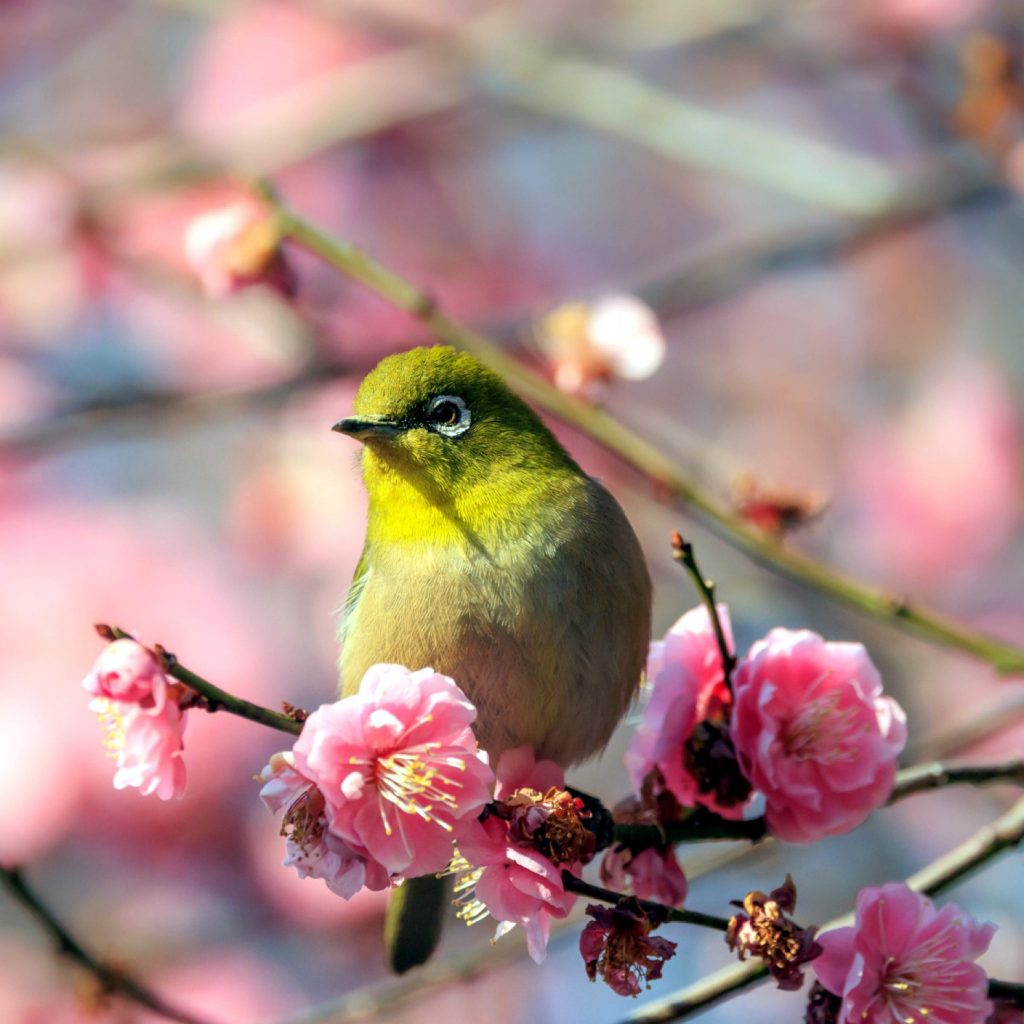
Whether it’s a bush warbler (Uguisu) or a white-eye (Mejiro) on the plum tree has been a subject of debate since ancient times. In reality, it is the white-eye that perches on the plum tree, but it is a fact that many people believe it to be the bush warbler. When we talk about Uguisu mochi (a type of rice cake) or Uguisu-iro (bush warbler color), it evokes the image of the white-eye perched on the plum tree. The bush warbler is brown and does not have the typical Uguisu-iro (yellow-green color). Japanese people have always loved the combination of plums and bush warblers. The earliest collection of Chinese poetry in Japan, Kaifuso (around 751 AD in the Nara period), features plums and bush warblers for the first time. The Man-yoshu (Nara period, around 783 AD) contains as many as 13 poems depicting plums and bush warblers. However, people from this era, and likely even up to the Edo period, were well aware that it was the white-eye, not the bush warbler, that perched on plum trees. In the Edo period, it became popular even among the common people in towns to keep bush warblers and white-eyes as pets, and this was because people had much more exposure to such birds compared to modern times. They were familiar with the ecology of bush warblers and white-eyes. Bush warblers are cautious and do not appear in places where there are unfamiliar people, and their diet consists of insects. White-eyes are attracted to sweet things and visit sasanqua flowers in winter and camellia and plum blossoms in spring. Due to the limited exposure to nature and the lack of knowledge about the ecology of bush warblers and white-eyes, the confusion arose from the modern misconception of the phrase ‘plum tree with a bush warbler,’ a seasonal expression, without understanding the true nature of these birds.
「梅にウグイス」なのか「梅にメジロ」なのか、昔から論争の的です。実際に梅に止まるのはメジロですが、ウグイスだと思っている人が多いのも事実です。ウグイス餅とかウグイス色と言う時には、梅に止まっているメジロの色を連想しています。ウグイスは茶色をしていて、いわゆるウグイス色(黄緑色)をしていません。日本人は昔から「梅に鶯」が大好きです。日本最古の漢詩集である懐風藻(奈良時代、751年ごろ)に梅とウグイスが初めて登場します。万葉集(奈良時代、783年ごろ)には、梅とウグイスが出てくる歌は13首も収められています。しかし、この時代の人もそうですが、おそらく江戸時代の人までは、梅に止まるのはメジロで、ウグイスではないことはよく知っていました。江戸時代には町の庶民の間でもウグイスやメジロを飼うことが流行っていましたし、それ以前でもそういう鳥に触れる機会が現代人よりも遥かに多かったからです。ウグイスやメジロの生態を良く知っていたのです。ウグイスは警戒心が強くて、めったぬ人の目に付く所には出てきませんし、虫が餌です。メジロは甘いものには目がなくて、冬にはサザンカの花、春になるとヤブツバキやウメの花に訪れます。自然に触れる機会も少なく、ウグイスやメジロの生態を知らぬまま、「梅に鶯」という季節を代表する言葉の取り合わせに振り回された現代人の錯覚から生じた混乱だったのです。
